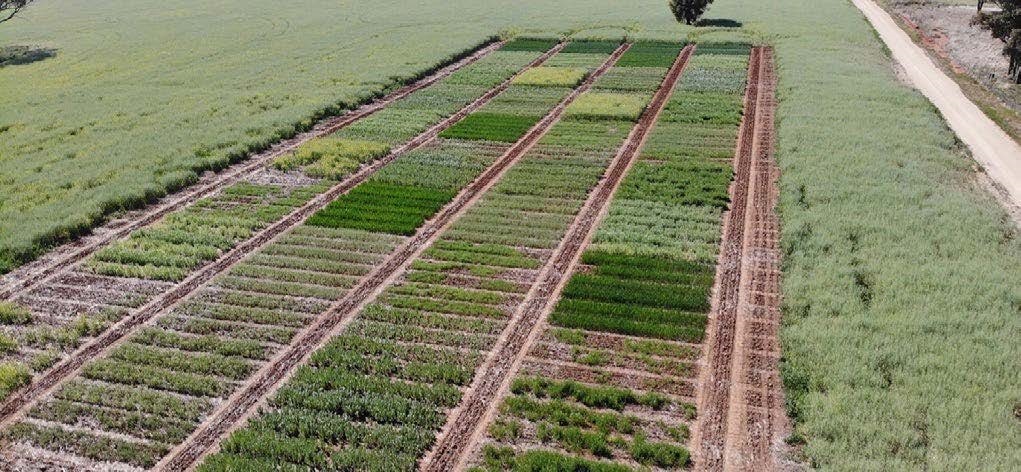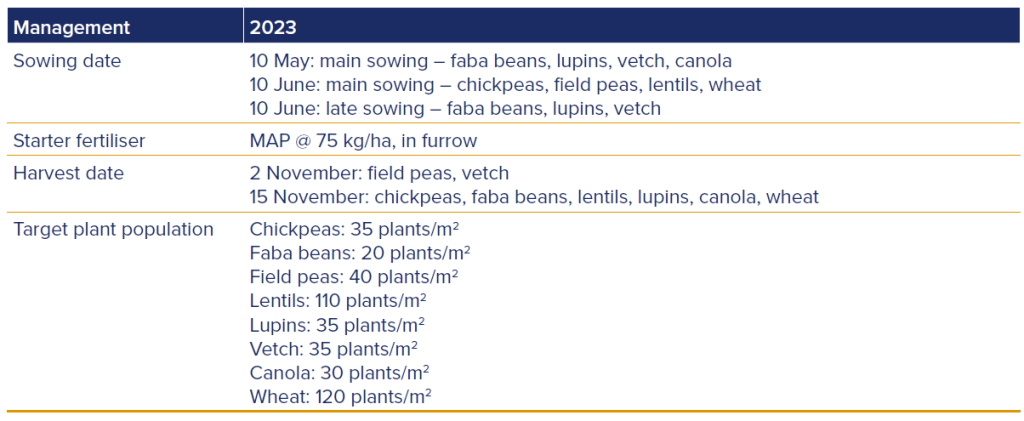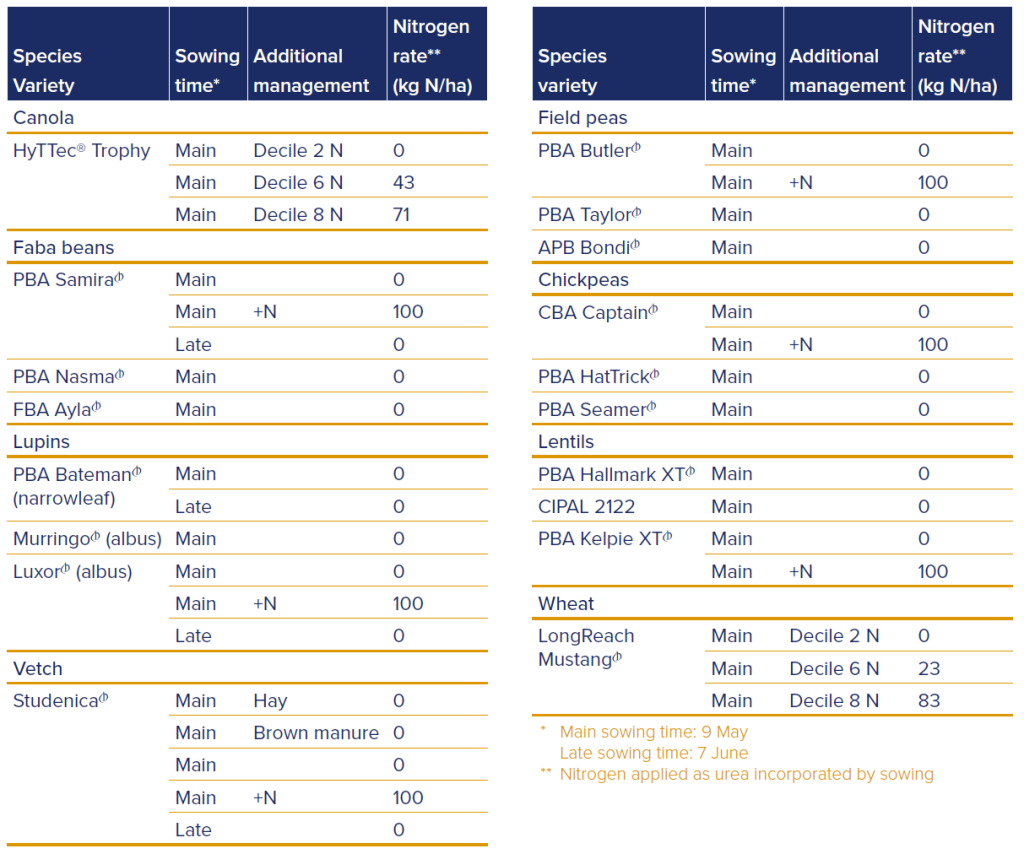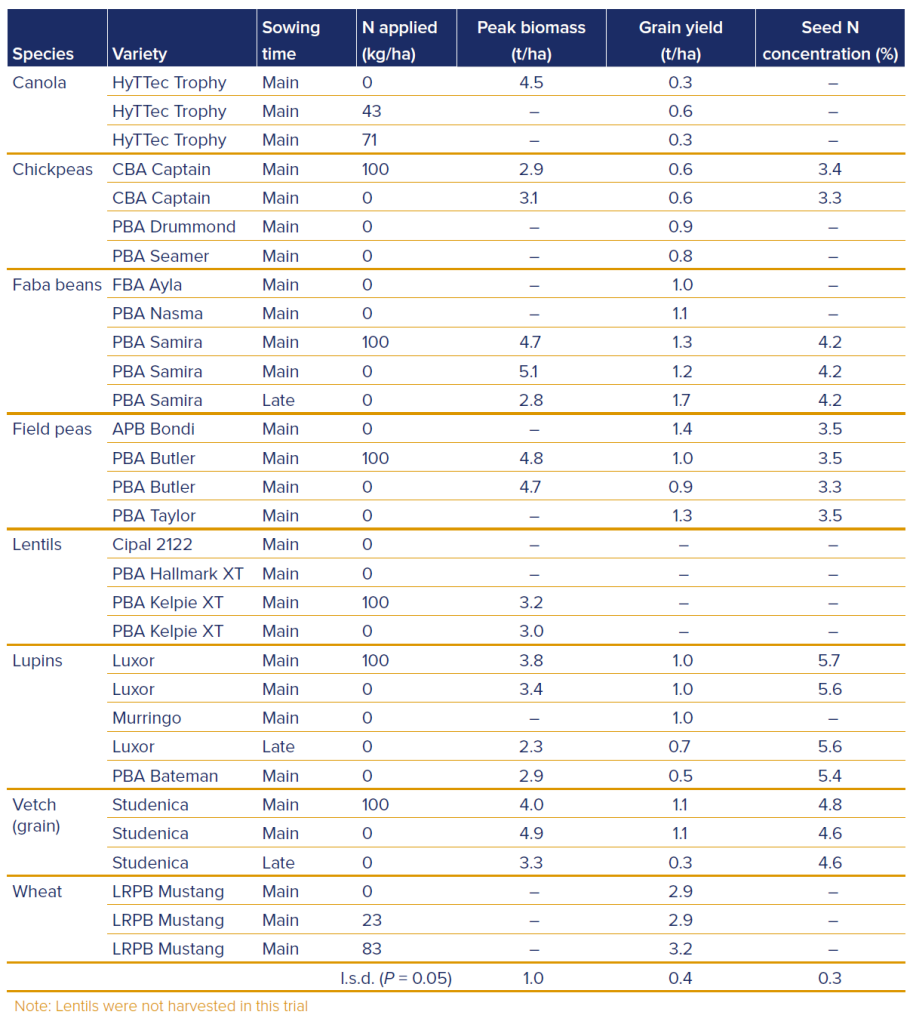Site attributes

season (GSR, April–October) rainfall at Dunedoo (Silo PPD).
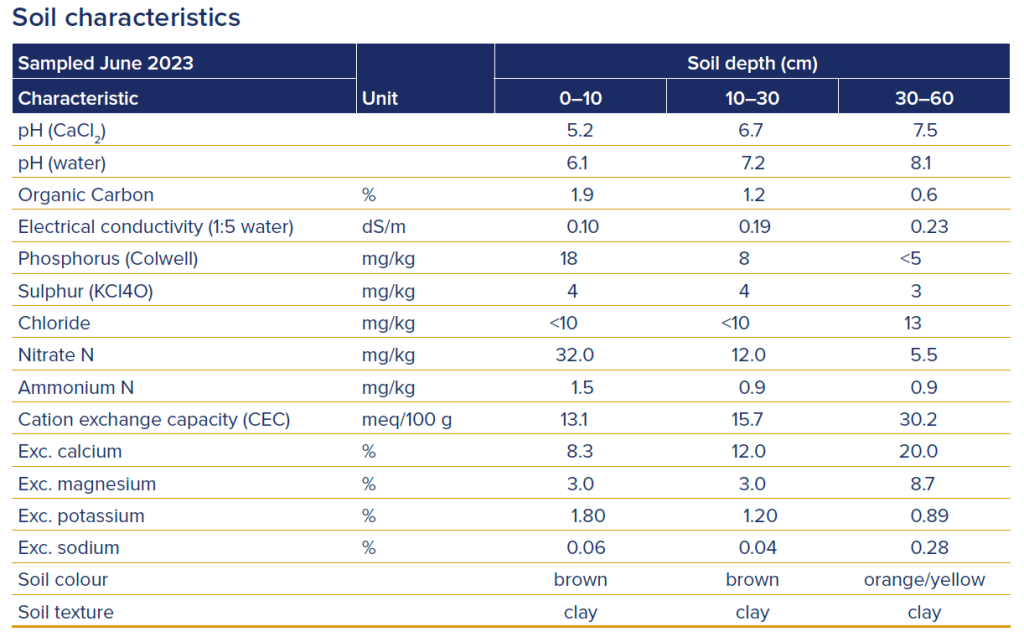

Pulse species comparison
Key findings
- Field peas were the highest yielding pulse species evaluated, averaging
1.2 t/ha. APB BondiA and PBA TaylorA out-yielded PBA ButlerA by 0.4 t/ha. - Albus lupin varieties LuxorA and MurringoA yielded double the narrowleaf
variety PBA BatemanA, 1.0 t/ha compared to 0.5 t/ha. - Chickpea grain yield averaged 0.7 t/ha, faba beans 1.2 t/ha and vetch
1.1 t/ha from the main sowing time. Delayed sowing resulted in a
significant increase in SamiraA faba bean yield (from 1.2 to 1.7 t/ha) and a
significant reduction in vetch yield (from 1.1 to 0.3 t/ha). - Faba beans, field peas and vetch had the highest peak biomass from the
main sowing time (~4.7 t/ha). - Delayed sowing of faba bean, albus lupin and vetch resulted in a
reduction in peak biomass. - A nitrogen application treatment (+N) was included to enable a
comparison of N-fixation in a high N environment between species.
Nitrogen was applied to selected varieties of each species and had
no effect on yield or seed nitrogen concentration. Biomass of the +N
treatments compared to Nil N was lower in SamiraA faba bean and
StudenicaA vetch, while it was higher in LuxorA albus lupins. - As a comparison with the pulse species, canola yielded 0.4 t/ha and
wheat yielded 3.0 t/ha. - Seed nitrogen concentration was highest in albus lupins and lowest
in chickpeas and field peas. Seed N concentration is important when
calculating the nitrogen balance (N-fixation – N removed) of a pulse crop.
